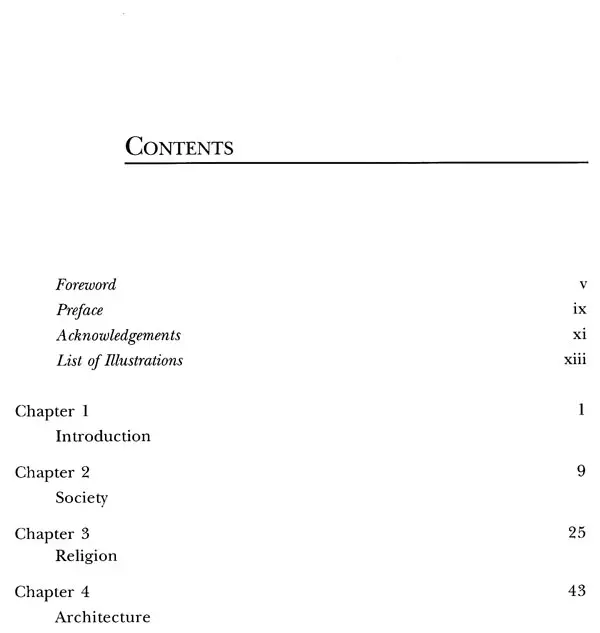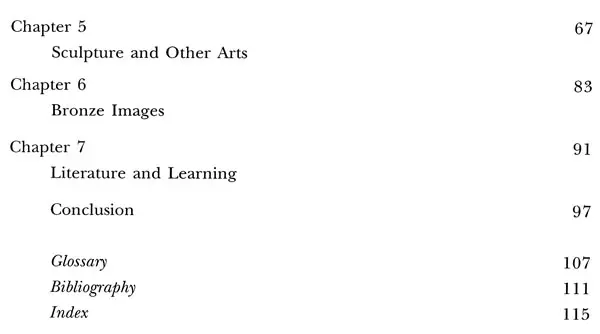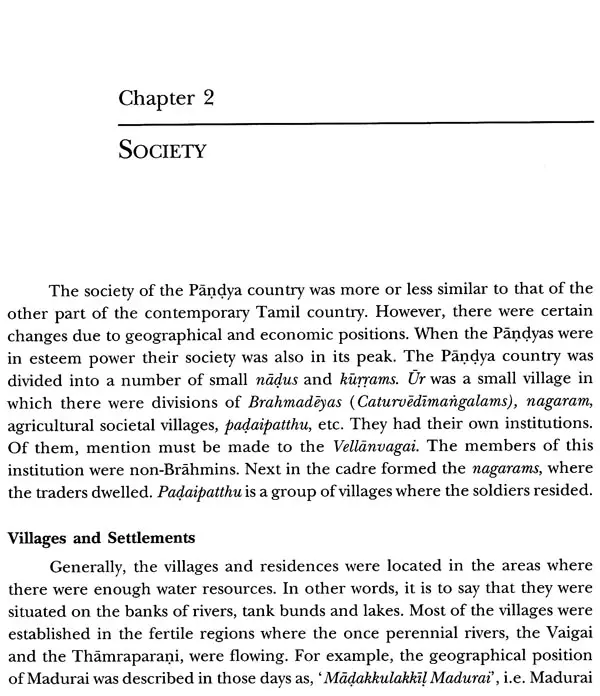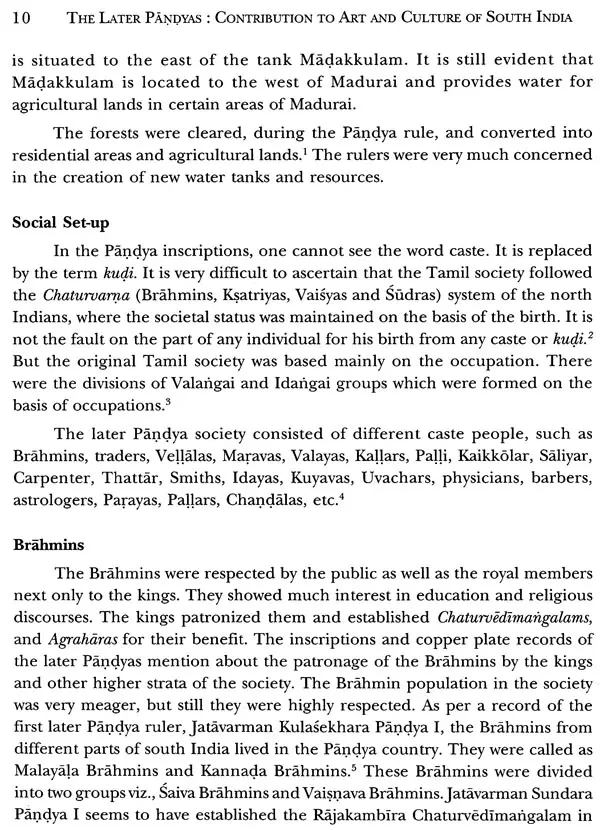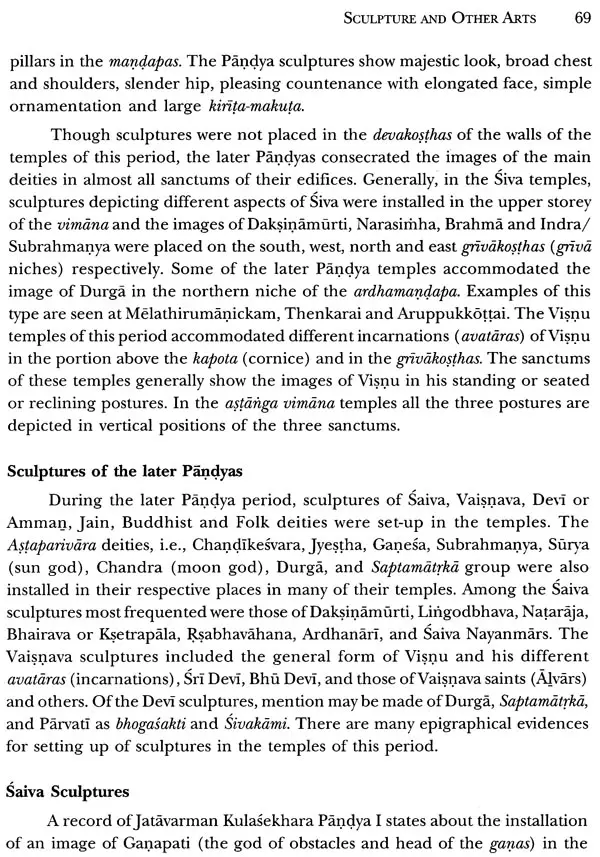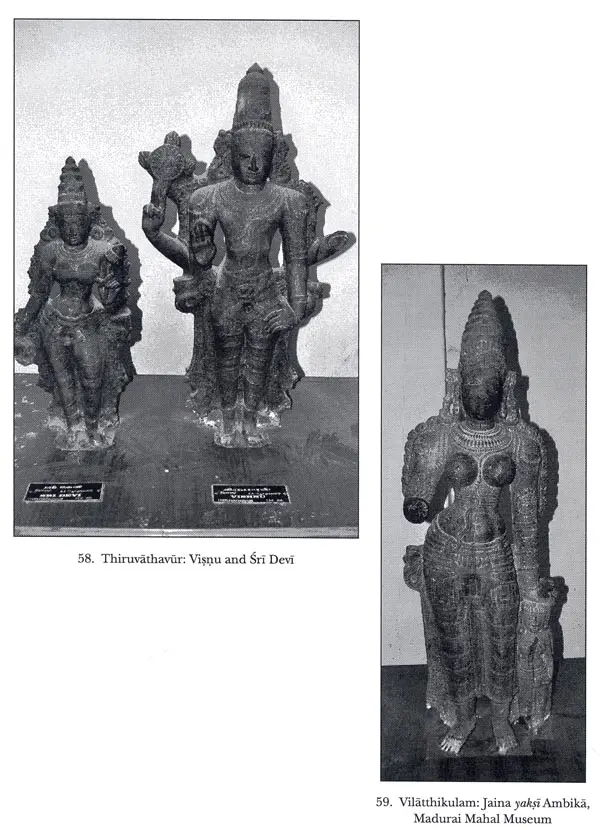About the Book The Pandya country roughly comprised the modern southern districts of Tamilnadu - Madurai, Sivagangai, Dindigal, Theni, Ramanathapuram, Virudhunagar, Tuticorin, Tirunelveli and Kanyakumari. The Pandyas ruled the country continuously for several centuries with small interruptions from the neighboring countries and the aliens. They even controlled the entire Tamil land and some parts of Andhra. Inspite of their constant quarrels and wars with neighboring countries, they very much concentrated in the excavation of cave sanctuaries, monolithic and structural temples. During the later Pat:10a period (A.D. 1190-1334) the rulers became more powerful and concentrated both in wars and in maintaining the status of the society, religion and art. They constructed around 165 temples in different villages.
The book presence a comprehensive study of the later Pandya temples, their general and specific architectural features, sculptural embellishments, paintings on the walls and bronze images produced during the period of the study. It also traces the social life of the people, caste system prevailed and honors and recognition received by different caste people from the kings. The religious sects which prevailed and the patronage of the rulers, royal members and officials are elaborately dealt with. The development of literature and learning during the later Pandya period is also explained exhaustively. The book justifies the significant contribution of the later Pandyas in equal footing with the Pallavas, Cholas and Vijayanagara-Nayaka rulers.
About the Author Dr G. Sethuraman (b. 1952) is a retired Senior Professor and Head of the Department of Art History, Madurai Kamaraj University, Tamil Nadu. He has served as Professor Emeritus in the Madurai Kamaraj University from 2013 to 2015.
He has 73 papers published both in international and national journals in his credit. He has been invited by the Ministry of Hindu Cultural Affairs, Colombo, Sri Lanka, for six consecutive years to present papers, chair the seminar sessions and deliver special and inaugural addresses. He has been awarded by the State Government of Tamilnadu for his book History of Buddhist Art (in Tamil) in April 2013. Some of his other books include, Facets of Indian Art and Culture (1995); Museology: Museum and its Techniques (1996); Social, Cultural and Art History of Tamilnadu (1997, 2017); Virudhunagar District - An Archaeological Source Book (as co-author, 2000); History of Performing Arts in Tamilnadu (2004); The saiva Temple of India: A Study on Ramesvaram Temple (2013). He was the editor of the Proceedings of the South Indian History Congress for four consecutive years. Some of the notable responsibilities he held in the university are: Director-in-charge of Academic Staff College, Deputy Director in Distance Education, N.S.S. Coordinator and Additional Controller of Examinations.
Foreword The Pandyas, who ruled the southernmost part of the Indian subcontinent, were referred to in the inscriptions of the emperor Asoka as independent rulers. They were traditional kings, who continuously ruled the Pandya country for several centuries starting from the Sangam Age (300 B.C. -300 A.D.) to the seventeenth century A.D. They made remarkable contribution for the growth of art, religion and society. But it is unfortunate to note that the scholars who had delved deep into the study of the history of India as well as that of Tamilnadu did not concentrate that much on the cultural, social and art history of the Pandyas. Actually, the study on the Pallavas and Cholas overshadowed the Pandya contribution. A thorough survey of the Pandya productions such as cave temples, monolithic temple and the structural temples would definitely bring to the limelight that their contribution much more significant than the contemporary dynasties. A few studies have been made by learned scholars like C. Sivaramamurti, KV. Soundrara Rajan, K.V. Raman and others.
Preface The present book entitled The Later Pandyas: Contribution to Art and Culture of South India is a modified version of my research work which I submitted to the University Grants Commission, New Delhi, in 2015, as a part of my Emeritus Fellowship. The Pandyas had ruled the southern part of Tamilnadu continuously for several centuries. They had immensely contributed to art and culture of south India. They excavated a good number of cave temples in the southern region. Their one and only monolithic temple at Kalugumalai in Tirunelveli district is considered as the jewel of the Pandyas. Their structural temples are abounding in the villages uncared. Though some studies were made on the contribution of the early and medieval Pandyas, the studies on the contribution of the later Pandyas, who had constructed around 165 temples, are very limited, hence this research work. This is a comprehensive work which fulfils the lacuna.
The first and introductory chapter gives a brief historical sketch of the later Pandyas and explains the aims and purpose of the present study.
Introduction Many valuable studies have been produced and fresh lights have been thrown on the contribution of the Pallavas, Cholas and Vijayanagara-Nayaka rulers to art, architecture and culture of south India, which in ancient times generally called Tamilagam. But only a few studies have been attempted in the recent past to traverse the significant contribution of the early and medieval Pandyas to art and culture. The achievements of the later Pandyas in the field of art and culture, which includes society, religion, literature and learning, etc., have not been thoroughly analyzed. Though the Pandyas had immensely contributed for the growth of temple art and architecture and culture, it is true that the studies on the works of the Pallavas and Cholas have overshadowed the Pandya contribution. The Pandya cave temples as well as the structural temples are all made of hard granite stones. Recent researches show that the Pandyas were the pioneers in the field of cave temples in Tamil Nadu. But it is yet to be consolidated. Their one and only monolithic temple at Kalugumalai in Tirunelveli district is one of the "jewels" of the south Indian architectural sculptures and considered to be the Ellora of the south as it is trenched out of the living rock as in the case of Ellora. Unfortunately, it was left unfinished and if completed it would have been the best among the monolithic structures of the south.
Book's Contents and Sample Pages
